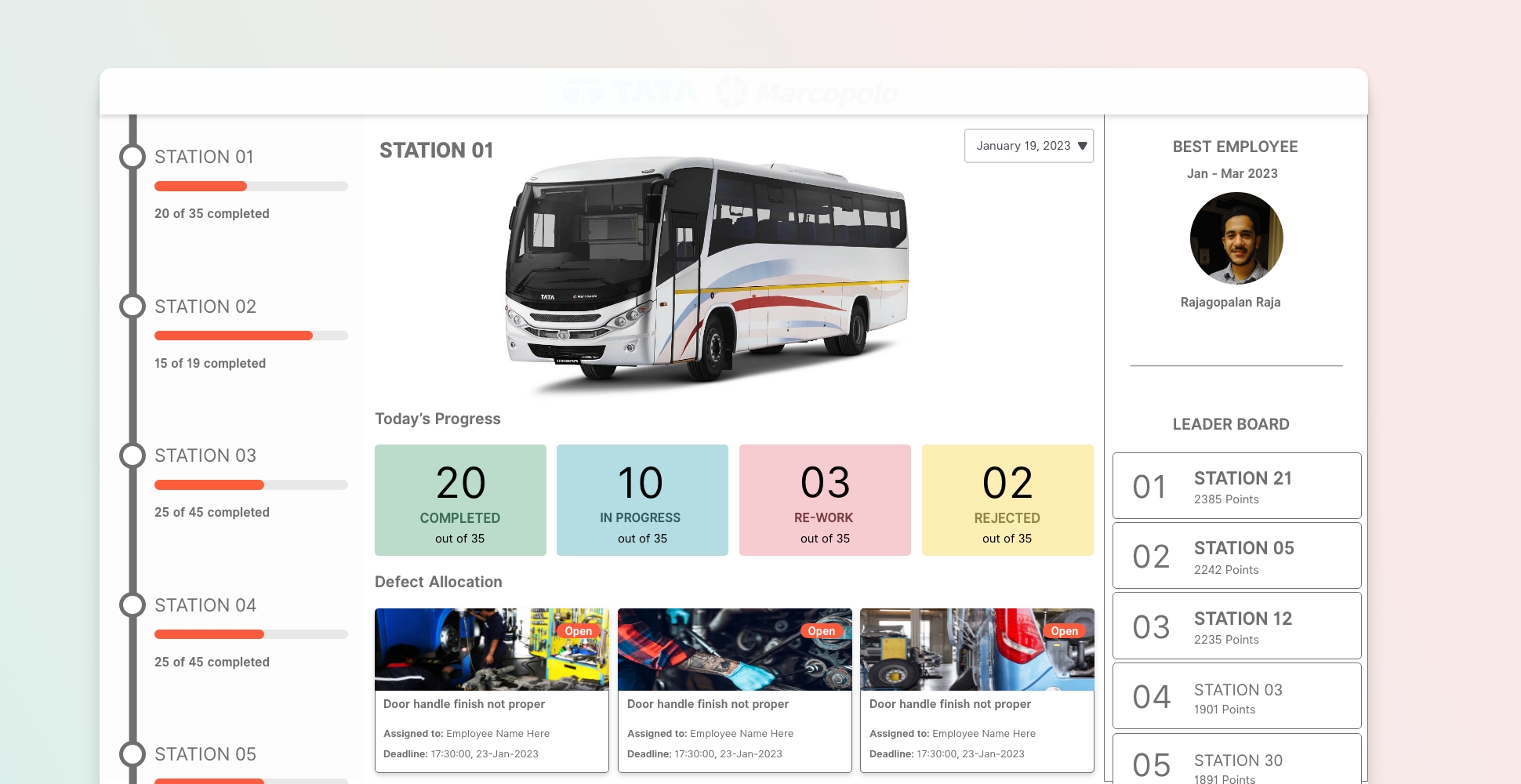Case Studies

Work Progress Display
UX (wireframe)This project involved designing a display board system for a bus manufacturing company to track and display the status of work completion across 17 production plants. The challenge was to create a user interface that not only met the basic requirements but also introduced additional functionalities to enhance inter-plant communication, employee engagement, and overall productivity.
Challenges
Complex Work Environment: The manufacturing process involved multiple plants with different stages of production, requiring a unified system to monitor progress across all locations.
Data Integration: The system needed to facilitate data flow between plants, enabling efficient planning and management.
Employee Engagement: The company wanted to motivate employees by integrating elements of gamification, such as a leaderboard, into the display system.
Research and Discovery
1. Requirement Gathering:
Initial Discussions: Engaged with the product owner to understand the core requirements for the display board.
On-Site Plant Visit: Conducted a field visit to one of the plants to gain a firsthand understanding of the production process, work environment, and pain points. This visit was crucial for identifying opportunities to add value beyond the initial requirements.
2. Key Insights:
Real-Time Data Needs: The need for real-time updates on work progress was evident, as delays in information flow could impact overall production timelines.
Error Rectification: Identified the importance of timely error rectification to prevent delays, which required clear visibility of pending issues and deadlines.
Employee Motivation: Recognized that employees could benefit from a system that not only tracked work progress but also provided recognition and motivation through a leaderboard.
Design Approach
1. Simplified Information Display:
Three-Column Layout: Designed the display board with a three-column layout to present all necessary information on a single screen.
Left Column: Showed the current progress of work across all plants, giving a quick overview of the entire production network.
Middle Column: Focused on the progress of the respective plants, including indicators for error rectifications nearing their deadlines. This allowed for immediate attention and action on critical issues.
Right Column: Introduced a leaderboard displaying the performance rankings of the plants, fostering a competitive and motivated work environment.
2. Enhanced Functionality:
Inter-Plant Data Flow: Enabled data sharing between plants to improve planning and coordination, allowing for better anticipation of potential delays or issues.
Error Rectification Alerts: Designed an alert system to highlight pending errors and their deadlines, ensuring that issues were resolved promptly to avoid production slowdowns.
3. User-Centric Design:
Visual Clarity: Ensured that the information was displayed clearly and concisely, with intuitive visual indicators for progress, warnings, and rankings.
Employee Engagement Features: The leaderboard was designed not just to rank plants but to encourage friendly competition and recognition among employees, boosting morale and productivity.
Outcome and Impact
The Work Progress Display Board significantly improved the visibility and management of work progress across the company's 17 plants. The system’s real-time data integration allowed for better planning and faster response to issues, leading to smoother production processes. The introduction of the leaderboard fostered a positive and motivated work environment, contributing to higher levels of employee engagement and performance. The new functionalities added during the design process not only met the initial requirements but also brought about strategic improvements in inter-plant communication and operational efficiency. The client reported increased productivity and a more cohesive work culture across their plants.
Key Takeaways
This project highlighted the importance of immersive research, including on-site visits, to fully understand the needs and context of the users. The successful design of the Work Progress Display Board demonstrated how thoughtful UX design can go beyond meeting basic requirements to create systems that add significant value and drive positive organizational change.